In part III of our series on Dancong, we will look at how to brew Dancong.
Dancong as I mentioned before, is one of the most challenging teas to brew but it is worth it.
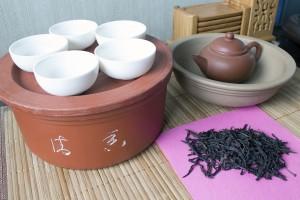
Setup
You will notice the Chaozhou gongfu tea setup is somewhat simpler, no cha hai, no fragrance cup but with 2 separate cha xi (茶洗).
These can be attributable to 1 word- heat- which is a common recurring theme in Chaozhou gongfu tea.
The pot used is a Chaozhou pot but a gaiwan works too.
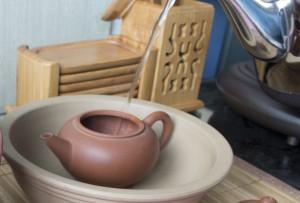
1) Warm the pot
Water used throughout this is boiling or near boiling.
Personally I prefer to boil a small kettle < 1 liter and use it quickly, before temperature drops, rather than re-boiling the water.
Reboiled water tastes flat for tea making, as does water that is kept at a higher temperature constantly hence multiple re-fills are better.
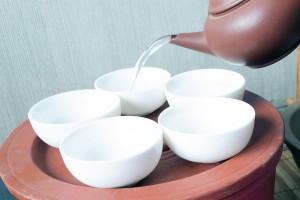
2) Warm the cups
Using the hot water from the warm pot, pour into the drinking cups to warm them.
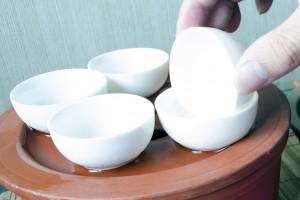
3) Rolling the cups
Fill a cup with hot water, roll the another cup in it to warm it evenly.
Do so for all the remaining cups.
This is to heat the cups and allow the fragrance to be exhibited more fully.
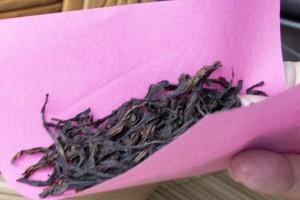
4) Segregation of Leaves or Na Cha (纳茶)
Segregate the leaves
- Biggest leaves at the bottom
- Smallest leaves in the middle
- Big leaves at the top
This is to prevent the smaller leaves from clogging the spout
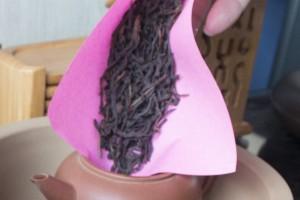
5) Add tea leaves
Using the piece of paper, slowly add the leaves to the vessel and form a pile that is known as a cha dan (茶胆).
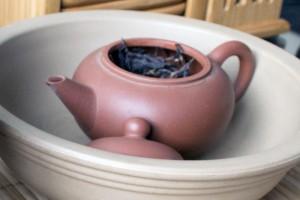
6) Leaves quantity
As Dancong leaves are wiry, depending on how tightly rolled they are, allow the leaves to fill 1/2 to 2/3 of the pot.
If you prefer to weigh, 1-1.4 grams for every 25 ml of water is about right
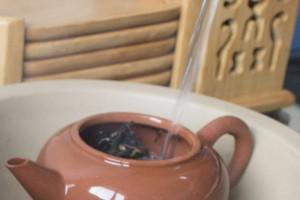
7) Add water
Water is poured in to ‘rinse’ the leaves.
Pour from a height (high pouring) and poured near the sides of the opening to avoid destroying the cha dan. Move in a circular motion as you pour to swirl the leaves and help them unfurl more completely.
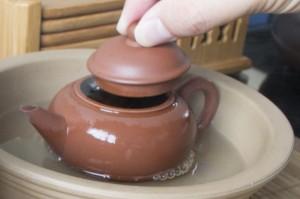
8 ) Scrap the foam
As the water is filled to the brim, there will be some foam- albeit lesser than Wuyi Yancha- at the top.
Use the lid of pot (or gaiwan) to gently scrap away the foam.
Discard the first brew.
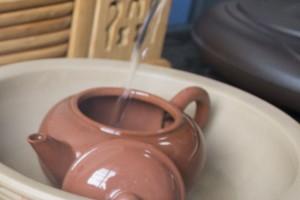
9) Add hot water
Same thing applies
- near boiling
- high pouring near the opening
- circular motion
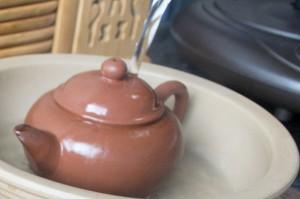
10) Douse the pot
Pour hot water the the pot, this is to preserve the heat (it’s that word again) of the pot.
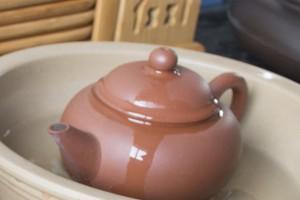
11) Infuse
Start with 10-15 seconds for the first infusion.
You can vary it according the type of tea and personal preference.
Generally Dancong tend to be more bitter and astringent- so a short infusion usually works well and preserves the fragrance of the tea.
See here for a previous post on this topic
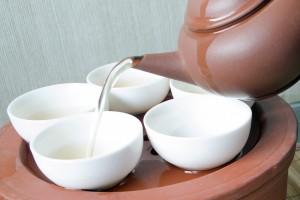
12) Pouring tea
Pour into small cups, filling 1/4 to 1/3 at a time.
This is to distribute the strength of the tea evenly.
In Chaozhou gongfu tea there is no cha hai used to preserve the heat of the tea.
This post talks about distributing evenly without a cha hai
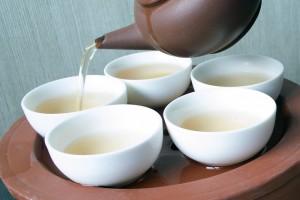
13) Keep circling
4 words to remember in pouring tea for Chaozhou gongfu cha
“底,快,匀,尽”
Low (pouring from a low height), quickly, evenly and completely.
Pouring low and quickly preserves the heat.
Even= fairness to all guest
Completely to prevent the next brew from being bitter and astringent
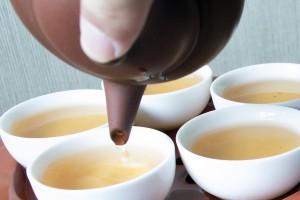
14) Extracting the last drops
The final drops in each pot are the essence, distribute about the cups evenly
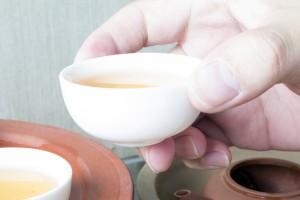
15) Drinking
“先闻其香,后品其味”
‘First smell the fragrance, then appreciate the taste’
This applies to all types of tea but particularly for oolong, especially dancong.
The fragrance changes subtly as the temperature of the tea falls- Now you know why heat is so important.
When freshly poured, the fragrance is different from a mere 15 seconds later, which is probably the minimum time lapse that you have to wait before you can drink the tea.
There are more than 500 fragrance compounds in teas, certain ones are amplified in heat and obscure the rest. As the heat fades slightly, smells of other compounds will be more discernible.
“一啜而尽,三嗅杯底”
啜 (chuo4) is an interesting word, it means sip. But apart from tea, it is generally used for soups.
So it is a hearty, lusty sip type of consumption.
Sip completely- i.e. drink to the last drop- and smell the cup thrice.
In my opinion, the most comforting fragrance of tea is in the “empty cup fragrance” (杯底香) and that also changes with temperature.
In drinking, chew the tea, let it roll over your tongue and take small sips.
Appreciate the depth and mouth feel of Dancong.
After you finish the tea, suck on your teeth and feel the lingering fragrance on it.
This is Dancong, the most alluring of teas.
Don’t miss our other articles on Dancong
Part I: What is Dancong aka No it is not a ‘single-trunk’
Part II: When did Dancong begin aka not just legend, HISTORY (cos that is important)
Part III: What are the different types of Dancong aka Phoenix, Lintou, different fragrances
See here for other articles related to varieties of oolong tea
See more articles on overviews of various categories of tea
